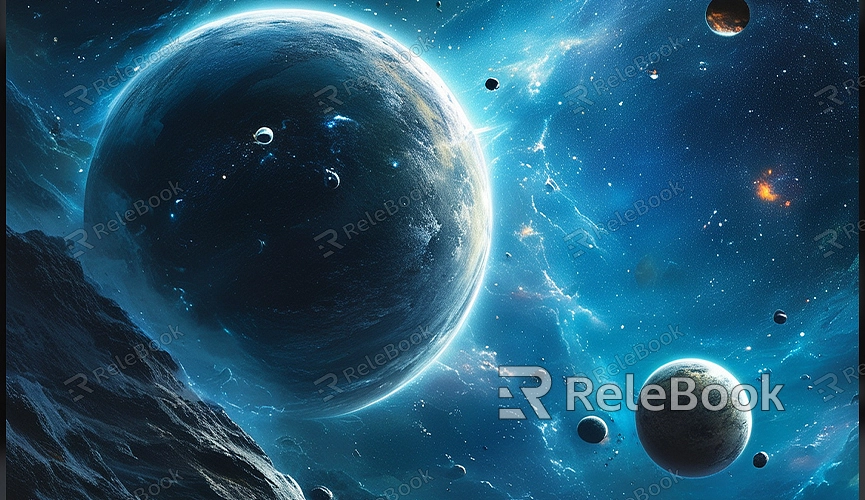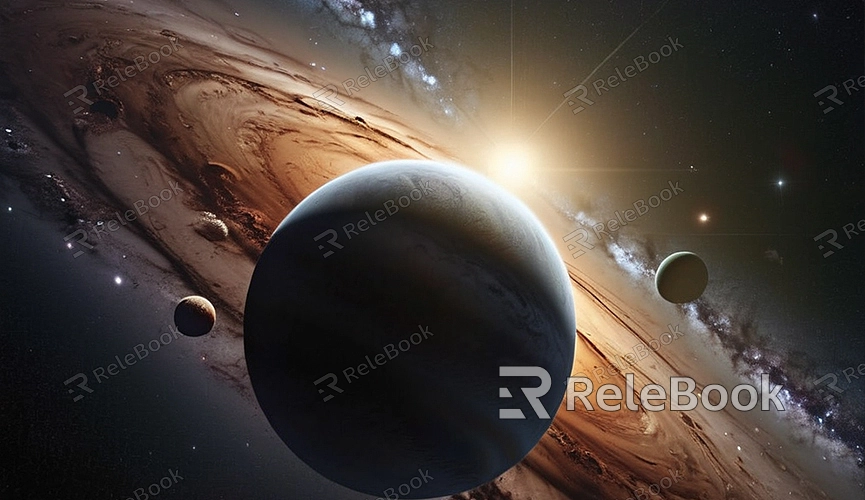How to Make 3D Planet Models
Creating 3D planet models is an engaging and challenging task. Whether you’re designing planets for games, films, or educational projects, you’ll need some basic 3D modeling knowledge and skills. This guide will walk you through the process of creating realistic 3D planet models using Blender and provide useful tips and resources to enhance your models.
Choosing and Installing 3D Modeling Software
First, select a suitable 3D modeling software. Blender is a powerful, free tool that’s ideal for both beginners and professionals. You can download and install the latest version from the Blender website.

Creating the Base Planet Model
1. Open Blender: When you start Blender, you’ll see a default cube. We’ll remove this and add a new sphere as the base model for the planet.
2. Delete the Default Cube: In the 3D Viewport, select the cube, press `X`, and choose “Delete.”
3. Add a Sphere: Press `Shift + A`, select “Mesh,” and then choose “UV Sphere.” This creates a new sphere model for your planet.
Adjusting the Sphere Shape
To make the planet model more realistic, adjust the sphere’s shape and detail.
- Subdivision: In the right panel, go to the “Modifiers” tab and add a “Subdivision Surface” modifier. Set the subdivision level to 2 or 3 to increase the sphere's polygon count, making it smoother.
- Apply Modifier: Once you’ve adjusted the subdivision, click the “Apply” button to finalize the changes.
Adding Textures and Materials
Textures and materials are crucial for making your planet model look realistic. Use the Shader Editor in Blender to create and adjust materials.
- Open Material Properties: In the right panel, go to the “Materials” tab and click “New” to create a new material for the sphere.
- Add Texture: In the Shader Editor, add an “Image Texture” node and connect it to the “Material Output” node. Click “Open” and select the texture image you want to use for your planet.
Adjusting Texture Mapping

To ensure the texture displays correctly on the sphere, adjust the texture mapping.
- Select the Sphere: In the 3D Viewport, select your sphere model.
- Switch to UV Editing Mode: Press `Tab` to enter Edit Mode, then press `U` and choose “Smart UV Project.”
- Adjust UV Mapping: In the UV Editor, you’ll see the sphere’s UV map. Adjust the UV map to ensure the texture displays correctly on the sphere’s surface.
Adding High-Quality Textures and HDRIs
High-quality textures and HDRIs (High Dynamic Range Images) can significantly enhance the realism of your planet model. Relebook is an excellent platform offering a wide range of premium 3D resources. For high-quality 3D textures and HDRIs, visit [Relebook Textures](https://textures.relebook.com/) for free downloads. For beautiful 3D models, check out [Relebook 3D Models](https://3dmodels.relebook.com/), which provides a large selection of high-quality 3D assets.
Adding Lighting and Environment
Lighting and environment settings greatly affect the final appearance of your model. You can add lights and HDRI environments in Blender to enhance the visual effects of your planet model.
- Add Light Sources: Press `Shift + A`, select “Light,” and then choose “Sun” or “Point Light.” Adjust the light’s position and intensity for the best results.
- Add HDRI Environment: In the “World” panel, add an “Environment Texture” node and load an HDRI image. This will render your model in a realistic environment, increasing its realism.
Rendering the Planet Model
Once you’ve completed the above steps, you can start rendering your planet model.
- Set Render Engine: In the “Render” panel, select a suitable render engine, such as Cycles or Eevee.
- Adjust Render Settings: Modify the render settings as needed, including resolution and sample count.
- Start Rendering: Press `F12` to render your planet model. After rendering is complete, you can save the image or proceed with post-processing.
By following these steps, you can create a realistic 3D planet model. If you have higher requirements for your planet models, consider exploring advanced features and techniques in Blender to continually improve your modeling and rendering skills.

